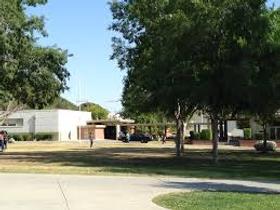Community colleges have experienced a surge in enrollment, thanks to an economic slowdown that has resulted in fewer graduates being able to afford four-year universities right out of high school. Rising unemployment rates have also contributed to the increased enrollment at these institutions, as laid-off adults head back to school to get training in recession-proof industries.
This trend works well into President Obama's plan to raise graduation rates at colleges across the country over the next few years. However, the increase in students also requires additional funding to accommodate them – which is much easier said than done in the current economic climate.
Stimulus Funding and Community Colleges
Stimulus money has been a help to many community colleges striving to provide courses and support to the new influx of students. However, stimulus funding is not expected to continue into the next academic year, leaving many institutions floundering for ways to make up the budget shortfall at a time when belts have already been tightened past the comfortable point.
In fact, the large majority of community colleges across the country have absolutely no idea how they will balance their budgets once stimulus funding ends, according to a recent study from The Education Policy Center at the University of Alabama.
According to a report at Inside Higher Ed, the annual survey of state directors of community colleges revealed that only 11 states have a plan in place to balance their budgets once stimulus money is gone. By the same token, 21 states are predicting that the end of stimulus funding will result in operating budget cuts in higher education. What those cuts will specifically look like in the next fiscal year remain to be seen.
This video offers an overview of the University of Alabama's Education Policy Center.
Less Money, More Students
At the same time states are considering budget cuts and community colleges, the enrollment at these institutions continues to skyrocket. As many as 35 states expect to see enrollment increases, at an average growth of 9%.
Janice N. Friedel, a co-author of The Education Policy Center's study, told The Chronicle of Higher Education, "Community colleges should be expanding, not contracting." Friedel added that these institutions serve a vital need in their communities because of the diverse student population to which they cater.
Despite the significance of these colleges in meeting the needs of today's workforce, funding for programs and operations are scarce. Officials in 37 states predict a budget gap for community colleges for the current fiscal year. Up to 22 states are predicting budget cuts of up to 2% in areas like "across-the-board" cuts, deferred maintenance, and furloughs. These predictions will continue an unfortunate pattern for community colleges. According to the study, community colleges reported more budget cuts in the previous fiscal year than any other sector of public higher education.
One of the biggest problems facing community colleges right now is cuts in state funding that have severely impacted the amount of money colleges have at their disposal. Last year, only six officials reported that their states fully funded their community college formulas. This number is the lowest recorded in history. On the other hand, 28 states reported cuts averaging 7.6%, raising concerns about whether community colleges will be able to retain their open access.
This video reports on the impact funding cuts have on the community colleges in Oregon.
Less Money = Higher Tuition
To combat shortages, many community colleges are resorting to increasing tuition and fees for their student bodies. The study found that 44 states raised tuition at community colleges at five times the rate of inflation.
Tuition increases also raise concerns that formerly affordable community colleges could become much less accessible to a large percentage of the student population that typically uses them.
Tuition increases were only used to make up for shortfalls in the current budget, but not to offset funding losses when stimulus money is no longer available.
This video reports on the effect funding cuts will have on Haywood Community College.
A Wing and a Prayer
As far as stimulus planning goes, the large majority of community colleges have done nothing of the kind. Stephen G. Katsinas, director of The Education Policy Center and co-author of the report, told the Chronicle of Higher Education, "There is a lot of uncertainty across the states. At the same time, there has been little long-term planning. The primary strategy appears to be: Pray, and hope for a state-revenue rebound."
While community colleges may not be doing much to prepare for the loss of stimulus money, lack of planning is not stopping more and more college students from enrolling in these institutions. Katsinas added, "This 'tidal wave' of students knocking at the door for access to postsecondary education programs and services will occur whether or not public postsecondary institutions are funded to serve them."
Questions? Contact us on Facebook. @communitycollegereview















